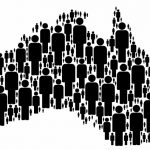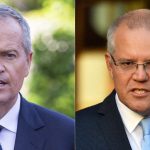It’s a RAP for indigenous women: Reconciliatory action and the Commonwealth Games

Increasingly Australian sport organisations are formally signposting their commitment to reconciliation, Indigenous equality and inclusion through Reconciliation Action Plans (RAP).
Against the backdrop of this year’s National Reconciliation Week (2020) theme ‘In this together’ and our research in press we explore how Reconciliatory Action objectives might be realised through large scale sport events, in the case of our research the Gold Coast Commonwealth Games (GC2018). More specifically we consider inclusion for Indigenous Australian women through reconciliatory action.
What is a RAP?
Reconciliation Australia (RA) is the leading, independent organisation with responsibilities for promoting and facilitating reconciliation.
The building of respectful and trusting relationships between the wider Australian community and Aboriginal and Torres Strait Islander peoples underpins their establishment in 2001.
As part of its contemporary mandate, RA facilitates and administers the Reconciliation Action Plan program. The RAP program, initiated in 2006, provides a framework for organisations to support the national reconciliation movement.
RAPs are formulated based on three pillars, expressed by RA as ‘Relationships, Respect and Opportunities’.
Redressing the marginalisation of Indigenous women’s voices, histories and subjectivities.
Our interest in understanding and strengthening opportunities for Indigenous women is a response to the marginalisation of Indigenous women’s voices, histories and subjectivities.
Our research offers a context in which to consider how future large-scale sport events might best encourage inclusion outcomes for Indigenous women and Australia’s first peoples more broadly.
The 2018 Gold Coast Commonwealth Games is a focus in part because the organising committee was the first to include a RAP. From the GC2018 event’s inception, reconciliation action planning was a key underpinning. Indeed, ‘the [RAP] was incorporated into all of our work and delivered a genuine recognition of people who are Aboriginal and Torres Strait Islanders, founded on action and results’ .
While the GC2018 organising committee postulated how the Gold Coast would work to create its very ‘own slice of history’ and would set a reconciliatory benchmark for future major events, the Games’ very origins in the British Empire Games have provoked cynicism and concern.
The Empire Games aimed to celebrate imperial prestige and bolster cultural bonds, and in fact, such was the Empire Games’ influence through the 1930s, Australia’s sporting authorities considered them worthier than the Olympics. The motto ‘Empire above all else, Australia second’ illustrated their status and allied influence.
Exposing the contradictions inherent in Commonwealth Games history, scholars have problematised how Indigenous Australian athletes were pressured to conceal their Aboriginality. For example, at the 1962 Commonwealth Games, pressure was exerted on high jumper Percy Hobson to deny his Aboriginality as ‘it wouldn’t look good for the gold medal winner to be a “darkie”’.
Referencing GC2018 more specifically, strategically organised yet peaceful demonstrations sometimes relied on women and children to draw international attention to the continuing social injustices experienced by the country’s First Nations peoples.
The Queen’s Baton Relay and the Opening Ceremony were met with protesters chanting and displaying the message: ‘No justice, no Games’. These demonstrations form part of a longer legacy of resistance. Similar resistances were seen during the 2006 Melbourne Commonwealth Games and earlier rallies occurred in response to the 1982 Brisbane Games.
Labelling the Commonwealth Games, the ‘Stolenwealth Games’, GC2018 was a visible platform for the diverse concerns of Indigenous people to be heard, ‘because they [felt] governments and the general public [were] not listening’. This failure can be seen through mainstream media representations.
For example, Gardiner’s examination of Australian mainstream print media during the Sydney 2000 Olympic Games found that despite alternative experiences and interpretations, issues of Indigenous identity were characteristically confined to national unity.
Notwithstanding this media context and history, the Commonwealth Games and mega sport events can also be equally influential contexts in which to contest this history and its fraught ongoing and highly nuanced impacts.
A good example is that of Cathy Freeman’s victories at the 1994 Commonwealth Games, where she celebrated by waving both the Aboriginal and Australian flags. While receiving some initial criticism, her actions have been conceived of as a powerful symbol of the Commonwealth Games’ broader symbolic and material contribution to reconciliatory outcomes and improved race relations .
At the very least, the development and implementation of the GC2018 RAP can positively signpost political resolve and public concern for acknowledging and addressing past injustices.
Making space for Indigenous women
In our research we found that the organisers of the GC2018 created space for First Nations women through employment, procurement, sports participation, education, language and cultural awareness opportunities. This involved providing opportunities for participation in a variety of health and active lifestyle initiatives including community and school-based projects.
Thirteen non-government organisations (NGOs) and other organisations received approximately $360,000 in grants which supported RAP-related outcomes for Aboriginal and Torres Strait Islander communities.
These grants positively contributed to Indigenous women and girls’ sport participation, physical activity and healthy lifestyle choices and programs by providing accessible opportunities in local communities and breaking down cost barriers.
Cultural Belonging
The Games organisers focused on developing awareness of and respect for Indigenous languages, cultures and histories to make members of the Indigenous community feel connected to the Games. Specifically, emphasis was placed on celebrating and recognising Indigenous heritage, cultures and protocols.
This meant respecting the Traditional Custodians of the land, the Yugambeh Language Group People of the Gold Coast. Activities included the showcasing of Aboriginal and Torres Strait Islander culture, art and languages, specifically focusing on developing cultural awareness and celebratory National Reconciliation Week events.
This linking of sport and culture in order to involve and empower Indigenous women extends the identification of these recently developed strategies.
Examples included promoting Indigenous art and culture, such as Jenna Lee (a Larrakia woman) who collaborated with Games organisers and the iconic company R.M. Williams. Lee displayed her artwork designs which were used for the Australian Team uniforms.
As part of the Official Ambassadors program, the Games organisers chose Indigenous ambassadors, to develop an international media profile for the Games and to demonstrate a cultural, community and reconciliation focus.
Four of these ambassadors were women—including Cathy Freeman OAM, Shantelle Thompson, Taliqua Clancy and Brooke Peris. This deployment of Indigenous women as role models has been identified as particularly important in encouraging younger Indigenous women to get involved in sport and physical activity.
Skills and leadership
Procurement and employment opportunities during the lead-up to, during and post Games were promoted. Furthermore, the Indigenous Volunteer Support Program (IVSP) was specifically developed to support Indigenous Australians from remote and regional communities involved in the Games delivery.
The services of several Indigenous businesses delivered and support the program, including Indigenous businesses directed by women such as Iscariot Media (directed by Leesa Watego), Snap Underwood and Aunty Robyn Williams.
Enabling voice
The RAP process involved ‘both Indigenous and non-Indigenous people talking openly. These practices enabled the representation of Indigenous women’s voices and an increase in opportunities to develop their agency. The Yugambeh Elders Advisory Group of nine members included five Indigenous women.
In drawing attention to the gendered orientation of advisory and working groups we are conscious of Brock’s signposting of how, while in western societies gender has been a marker of empowerment (male) and subordination (female), gender in Aboriginal societies shapes different fields of influence and empowerment.
Rather than devaluing women and femininities, the marking of men’s business and women’s business within Indigenous communities enabled agency for both genders.
Importantly on a symbolic and practical level, the intersections between reconciliation planning and Indigenous women’s voice and presence saw female Indigenous elder Patricia O’Connor attend the Commonwealth Games Queen’s Baton Relay commencement in London.
The baton was comprised of macadamia wood and was inspired by a story told by Patricia O’Connor. Macadamia nuts were frequently planted by groups travelling through country, to mark the way and provide nourishment for future generations:
When I was a little girl, probably seven or eight years old, I was cracking Queensland nuts. My grandmother said, ‘when I was a little girl, I planted those nuts as I walked with my father along the Nerang river’ and she said, ‘you call them Queensland nuts; I call them Goomburra’.
Final thoughts
While the discussed intersections between sport events and Reconciliation Action Plans can be a powerful context for realising social inclusion outcomes for Indigenous women and their families, further research exploring the lived experiences and interpretations of Indigenous women involved in the design and implementation of reconciliatory activities will enable a more in-depth understanding of how future large-scale events in Australia and elsewhere might similarly prepare for positive inclusion outcomes.
The importance of this research is heightened as Australian state governments bid to bring large scale sport events to our shores. Reconciliatory objectives and activities should be a cornerstone of all current and future planning.
This article was written by Dr Michelle O’Shea; Dr Hazel Maxwell, a Senior Lecturer at the University of Tasmania in Australia whose research and teaching focuses on physical activity, community sport, social inclusion and diversity management and Dr Megan Stronach, a Research Fellow at the University of Technology Sydney who has published widely in areas of sport management, cultural and women’s issues in sport, and sport history.
Dr Michelle O’Shea is a Senior Lecturer at Western Sydney University. Her research encompasses sport, culture and society, including gender and diversity in sport, social impacts and sports marketing.












